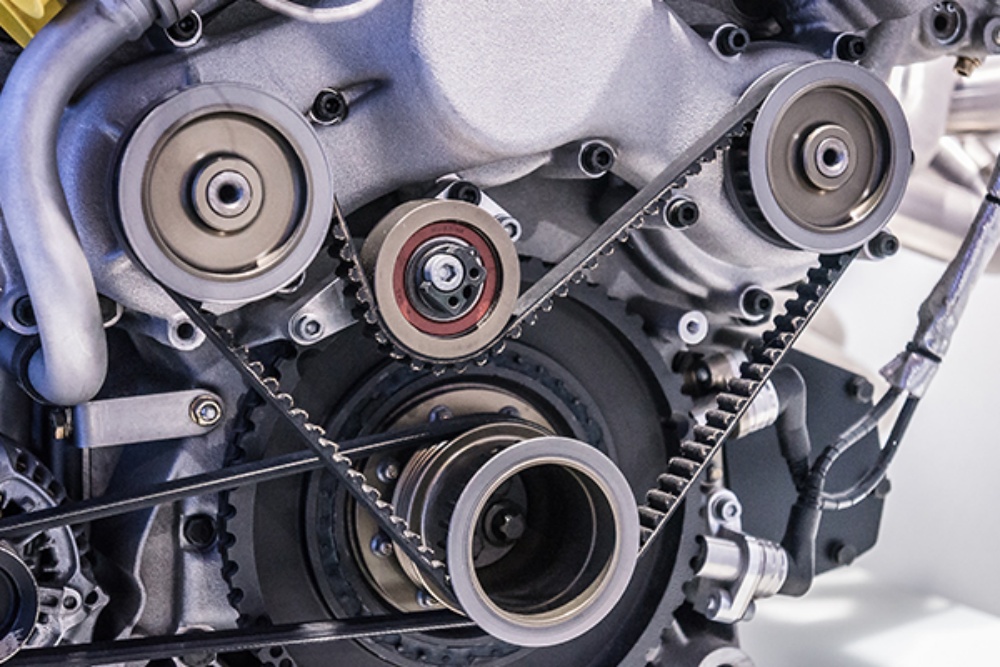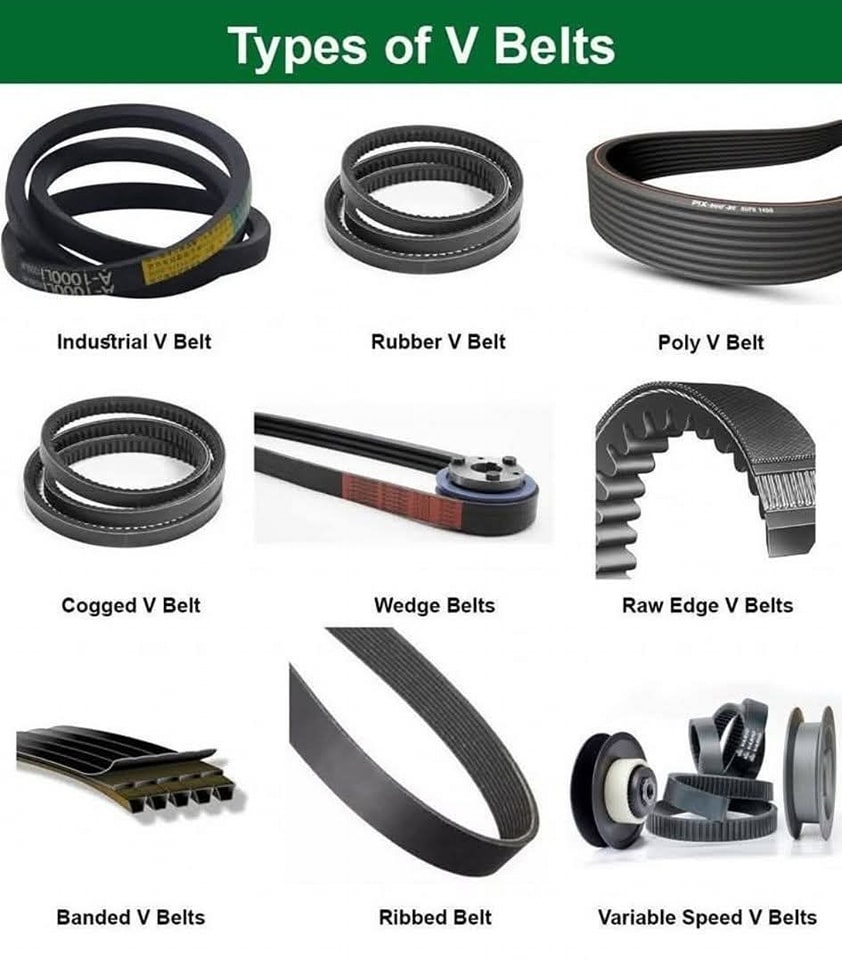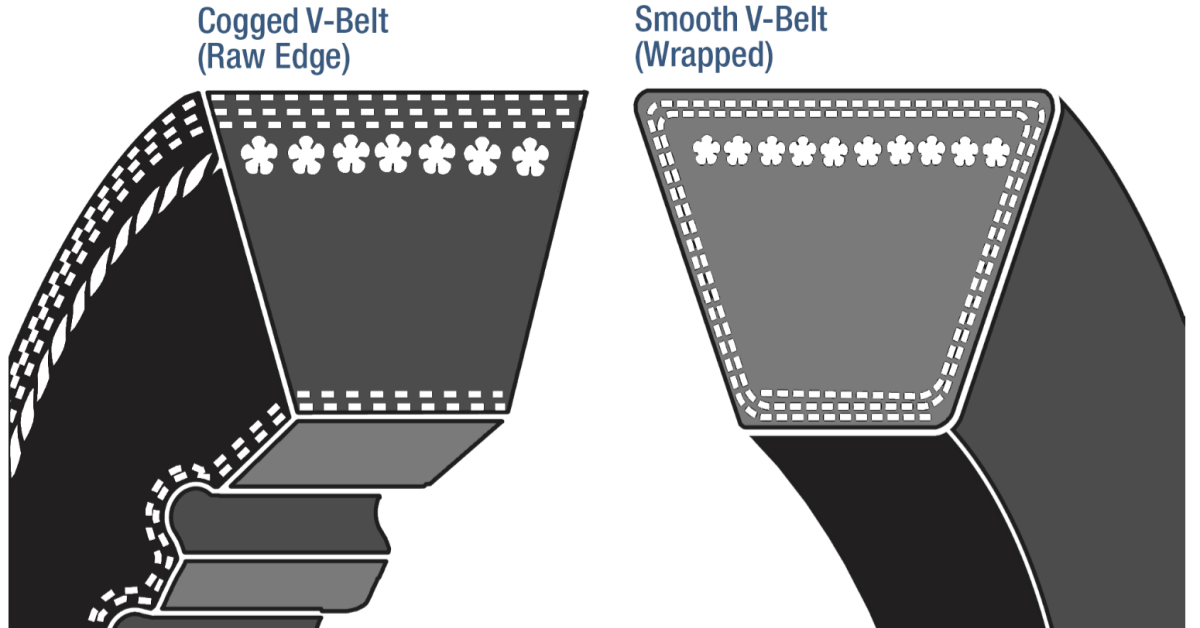V-Belts vs. Cogged V-Belts: Which One is Right for Your Application?
Are you struggling to pick the right belt for your machinery? It’s a common problem. Getting it wrong can cost you time and money.
Cogged V-belts are better than standard V-belts when you need more flexibility, less heat buildup, and better efficiency. They work well in small pulley systems and high-speed applications. But standard V-belts might be a better, cheaper choice for simpler drives.
Choosing between V-belts and cogged V-belts can be tough. So, let’s dive into the details to make your decision easier.
Are Cogged Belts Better Than V-Belts?
Having the right belt is important for smooth operations. But, are cogged belts really better, or is it just hype?
Cogged V-belts often outperform standard V-belts because of their design. The cogs allow the belt to bend more easily, reducing bending stress and heat. This leads to better efficiency and longer belt life, especially in applications with smaller pulleys.
Cogged V-belts, also known as notched V-belts, have grooves cut perpendicular to their length. This design change is key to their advantages. The cogs reduce the belt’s bending resistance, letting it wrap around smaller pulleys without excessive stress. Less bending stress translates to less heat generated during operation. I once had a client, Mark from Germany, who switched to cogged belts for his high-speed machinery. He told me the change significantly reduced belt failures and downtime. Here is a breakdown of why cogged belts often come out on top:
| Feature | Cogged V-Belts | Standard V-Belts |
|---|---|---|
| Flexibility | Higher | Lower |
| Heat Buildup | Lower | Higher |
| Efficiency | Better, especially on small pulleys | Good, but less efficient on small pulleys |
| Applications | High-speed, small pulley systems | General-purpose applications |
| Cost | Higher | Lower |
What Is the Application of Cogged V-Belts?
Understanding where cogged V-belts shine is key to choosing the right one. So, where are these belts most useful?
Cogged V-belts are ideal for applications needing high flexibility and heat dissipation. They are commonly used in automotive engines, HVAC systems, and industrial machinery with small pulleys or high speeds. Their ability to reduce bending stress makes them perfect for demanding environments.

Cogged V-belts really prove their worth in specific scenarios. Think about a car engine. The belts there have to manage a lot of power in a small space, dealing with high temperatures and constant changes in speed. Cogged belts handle this stress better than standard V-belts because they bend easier and keep cooler. This matters a lot for keeping the engine running smoothly and avoiding breakdowns. Also, in manufacturing, machines often use small pulleys to save space and weight. Cogged belts are great for these situations because they can handle the tight bends without losing power or wearing out too fast. Consider these applications:
- Automotive Engines: Powering alternators, power steering pumps, and air conditioning compressors.
- HVAC Systems: Driving fans and blowers in heating and cooling units.
- Industrial Machinery: Conveyor systems, machine tools, and other equipment with demanding power transmission needs.
- Small Appliances: Offering enhanced flexibility for compact designs.
What Are the Disadvantages of Cogged V-Belts?
While cogged V-belts offer many benefits, they aren’t always the best choice. What are the downsides?
The main disadvantages of cogged V-belts are their higher cost and, in some cases, increased noise compared to standard V-belts. For simple applications where flexibility and heat dissipation aren’t critical, the extra cost of cogged belts may not be justified. Also, the cogs can sometimes generate more noise.

Before you decide to use cogged V-belts, it’s important to think about the possible drawbacks. Cost is a big factor. Cogged belts usually cost more than standard V-belts because they need a more complex manufacturing process. For many applications, the extra performance of cogged belts might not be worth the higher price. Noise can also be a problem. The design of the cogs can sometimes cause more noise, especially at high speeds. This might be a concern in environments where noise needs to be kept to a minimum. Here’s a quick look at the disadvantages:
- Higher Cost: Cogged belts are generally more expensive to manufacture.
- Increased Noise: The cogged design can sometimes generate more noise during operation.
- Not Always Necessary: For low-demand applications, the added benefits may not justify the extra cost.
- Durability Considerations: In specific conditions, the notched design might render them less robust against wear compared to solid V-belts.
What Is the Best Type of V-Belt?
With so many options, finding the “best” V-belt can seem impossible. So, which one should you choose?
There’s no one-size-fits-all “best” V-belt. The ideal choice depends on the specific application, power requirements, speed, and environmental conditions. For high-stress applications, cogged or banded V-belts are often best. For simpler drives, standard wrapped V-belts may be enough.

Choosing the best V-belt really comes down to matching the belt to the job. Think about what the belt will be doing and what problems it will face. For example, if you’re dealing with high loads and a risk of belt whip, a banded V-belt might be the best choice because it offers extra stability and prevents the belts from twisting or coming off. If you need a belt that can handle small pulleys and high speeds, a cogged V-belt is probably the way to go. And if you just need a reliable belt for a standard application, a classic wrapped V-belt can get the job done without costing too much. I always tell my customers to think about these things:
- Application Requirements: Consider the power, speed, and torque needed.
- Environmental Conditions: Think about temperature, exposure to chemicals, and other environmental factors.
- Cost: Balance performance needs with budget constraints.
- Maintenance: Consider the ease of installation, tensioning, and replacement.
Conclusion
Choosing between V-belts and cogged V-belts depends on your application’s needs. Think about flexibility, heat, cost, and noise to make the right choice.
SANTE offers a variety of V-belts, including wrapped V-belts, cogged V-belts, and banded V-belts. They meet the needs of many applications. To learn more about SANTE’s V-belt selection. Contact us today!


